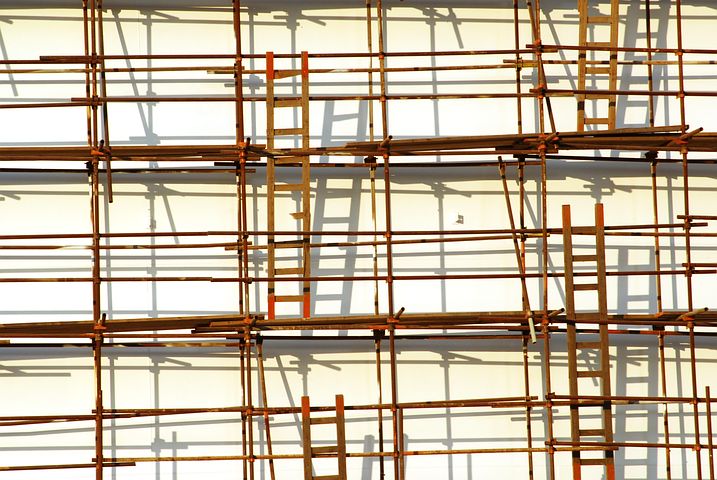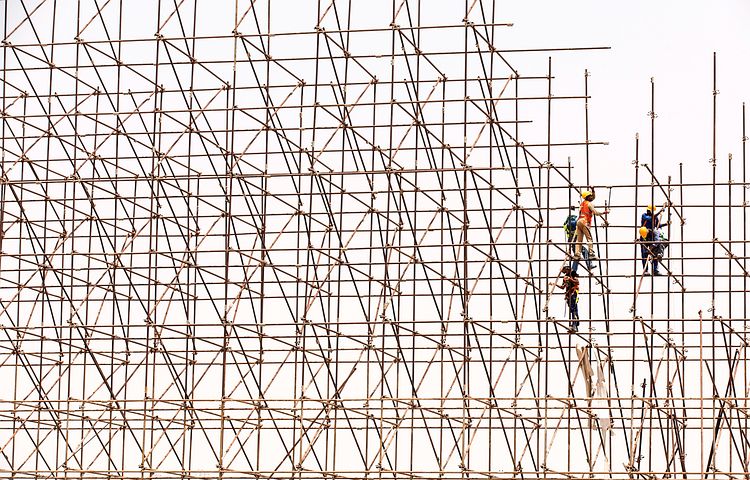When a structure is being constructed, repaired, or maintained, scaffold is utilized to support workers and supplies. Scaffolding comes in more than a dozen varieties, making it difficult to choose the best one for your project. A thorough understanding of the various kinds will help you make the best decisions for your project.
For your benefit, we’ll take a look at the most common types of scaffold today.
The Kwikstage
Stool with modular system and fixings. Scaffolding might seem to be a maze of joints and poles when seen from the bottom up. Working from a well built scaffold is a completely different experience.Structural Kwikstage scaffolding was created for those who want to focus their working hours on the project rather than putting up and taking down scaffolding. It is most often used in the United Kingdom and other Commonwealth nations, such as Australia.
Working with Kwikstage has the added advantage of being easy to construct, even by someone with just rudimentary technical skills. You may save time and money by using Kwikstage instead of other types of scaffold.
Painters, builders, roofers, bricklayers, carpenters, and masons are among the tradespeople who make use of Kwikstage. They use it to move equipment and goods around a construction site.
The Bamboo

Third-world nations including Sri Lanka, India, Nigeria, Bangladesh, and Hong Kong are notable users of this form of scaffold. Outside of Europe and North America, wooden scaffolding is most often seen.
Steel replaced it as the primary building material. The low cost, flexibility, high tensile strength, and environmental friendliness of bamboo explain in large part why it is still the material of choice in many nations.
The usage of bamboo scaffold in Hong Kong’s construction of skyscrapers and opera houses is well-known. It takes a team of highly-trained technicians and designers to build and maneuver through multiple floors of bamboo.
In comparison to steel, the tensile strength of bamboo is 28,000 pounds per square inch. The adaptability and utility of bamboo in contemporary architectural projects and designs has been widely praised because of its long-term sustainability and robustness.
Bamboo is also simple to put together, fast to design, and reusable. The beams, poles, and cross braces may be utilized for a period of seven years maximum.
The lack of pins and locks in bamboo makes it less secure than steel, which is a must for reliable connections. Loosening and wear might occur at the connecting locations.
When compared to steel, bamboo scaffold‘s walk boards are less secure. The walk board mats are lying loose on the cross beams while the ladders are tied to them.
The stairways
Most manufacturers of system scaffold provide a component that may be used to make stairs. In order to let employees reach multiple levels of the building, it is part of a scaffold framework. Consider them to be step scaffolds.
Scaffold for stairways satisfies the necessary requirements for health and safety. It is common to see them on building sites in the industrial sector. Repair workers, decorators, painters and the general public will find it useful. It gives you the ability to do maintenance and installation work above stairwells.
Easy to install, it comes with all the necessary safety features including a ladder access system and a safety railing and toe boards. This prevents you from sacrificing performance for security.
Scaffold is available in three main varieties. Choosing quality above pricing is the most important decision you can make. Make sure you don’t try to put up any kind of scaffolding on your own. When working at heights, it’s critical to choose a service provider that can satisfy your requirements while also ensuring the safety of both the personnel and the products they handle.
